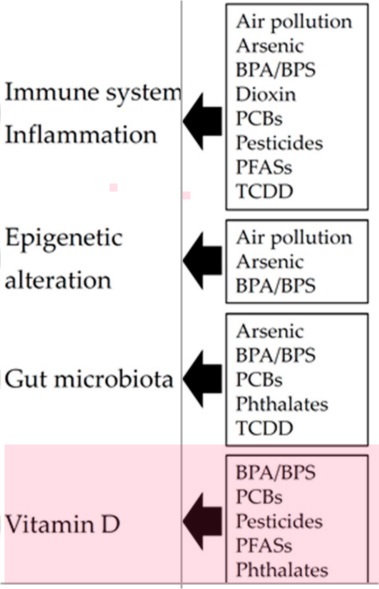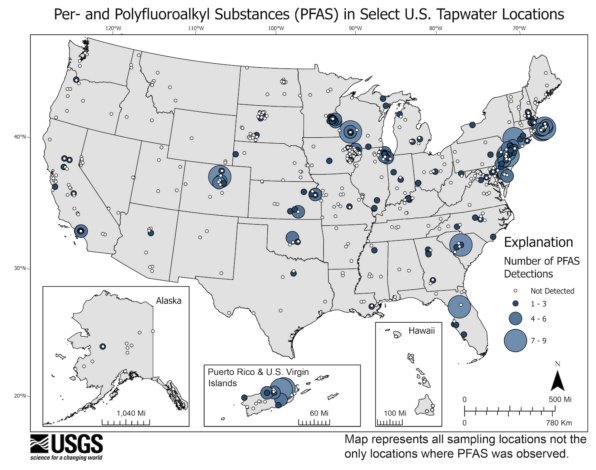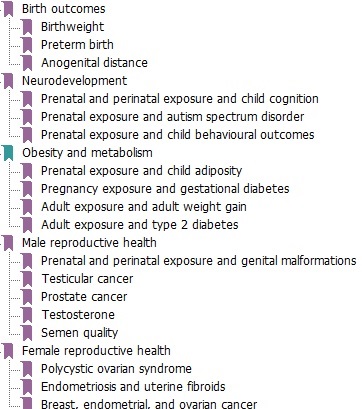Plastics, BPA, PCB and Vitamin D deficiency
The ocean and virtually all men and women now contain plastics
Some plastics are known to decrease Vitamin D levels meaured in the blood
Perhaps some plastics also limit vitamin D getting to the cells
By reducing kidney function or Vit D binding protein, or CYP27B1, or CYP24A1 or the Vitamin D Receptor
Solutions: 1) Avoid the plastics. 2) Take more vitamin D

VitaminDWiki
BPA is a possible cause of obesity epidemic - Dr. Greger June 2019
Off topic: Plastics and BPA are getting into seafood and your bloodstream – Dr. Greger Spring 2019
Microplastics causing problems in humans, etc. (Vitamin D can help) - many studies
PFAS (forever chemicals) reduce Vitamin D and VDR, cause health problems - many studies
PCBs increased the chance of being Vitamin D deficient by 3 percent – May 2013
Interactions with Vitamin D category listing has items
Endocrine Disrupting Chemicals and Vitamin D (T1 Diabetes in this case) - April 2020
Amount of plastics in 700 foods in San Francisco - Jan 2025
https://www.plasticlist.org/ You can chose to look at 1) ng, 2) % above USA, 3) % above Europe (EFAS)
9 year old male Autistics were 6.2 X more-likely to have BPA - Aug 2024
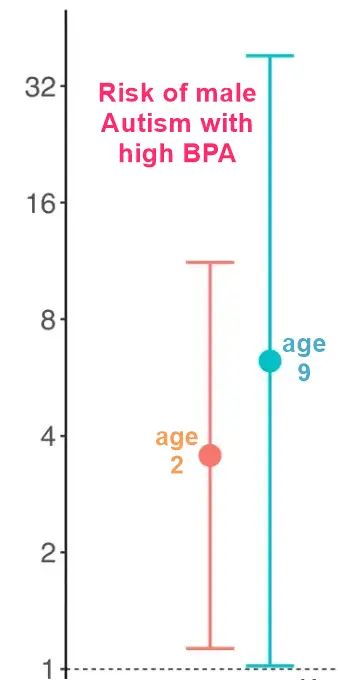
"BPA can disrupt hormone-controlled male fetal brain development in several ways, including silencing a key enzyme, aromatase, that controls neurohormones and is especially important in fetal male brain development."
"The odds of a confirmed ASD diagnosis were six times higher at age 9 years only in men with low aromatase activity (OR, 6.24; 95% CI, 1.02-38.26)."
"Brain aromatase, encoded by CYP19A1, converts neural androgens to neural estrogens and has been implicated in ASD. Postmortem analyses of men with ASD also show markedly reduced aromatase activity."
Web
Microplastics might be a problem for macrophages - May 2023
The internal dose makes the poison: higher internalization of polystyrene particles induce increased perturbation of macrophages
"Overall, this means that internalization of high doses of polystyrene favors the emergence of subpopulations of macrophages with an altered phenotype, which may not only be less efficient in their functions but also alter the fine balance of the innate immune system."
‘Forever Chemicals’ in at Least 45 Percent of US Tap Water : USGS Study - July 2023
Phthalate and novel plasticizer concentrations in food items from U.S. fast food chains: a preliminary analysis Oct 2021 📄 PDF the study does not contain the word VITAMIN
How Plastics Can Affect Your Love Life Dr. Greger Dec 2018
Why BPA Hasn’t Been Banned Dr Greger nov 2016
What Not to Do When You Handle Receipts Dr. Greger Feb 2020
Effects of endocrine disrupting compounds on Vitamin D circulating levels - 2017 10.11138/ccmbm/2017.15.1.132
Receipts are 5! BPA by Weigh. BPA can enter the body thru the skin, and not get detoxified by the gut->liver pathway
“...many skin-care products, including hand sanitizers, lotions, soaps and sunscreens,” contain chemicals that enhance skin penetration.
"Women working in automotive plastics and food canning are at five times the odds of breast cancer," ree PDF online
Eight Different Plasticizers Found in 90% of People Mercola Feb 2021
"Oceana International describes plastic material a little bit like a curious cat, finding places in the environment where it shouldn't fit and being able to sneak in."
"The average (baby) bottle tested reached 4 million particles for every liter of water."
Exposure to Plastic Chemicals Before Conception Tied to Premature Births NYT April 9, 2020
"50 percent to 70 percent increased relative risk of preterm birth"
No mention of decreased Vitamin D
Effect of developmental exposure to bisphenol A on steroid hormone and vitamin D3 metabolism
- Perturbation of vitamin D3 metabolism by BPA can be associated with neurobehavioral problems .https://doi.org/10.1016/j.chemosphere.2019.124469 - Dec 2019
Investigation of serum bisphenol A, vitamin D, and parathyroid hormone levels in patients with obstructive sleep apnea syndrome Free PDF July 2013
Endocrine-disrupting chemicals: implications for human health - Aug 2020 📄 PDF
22% more likely to be Vitamin D deficient (< 20ng) while pregnant if BPA or Phthalate in urine – Aug 2017
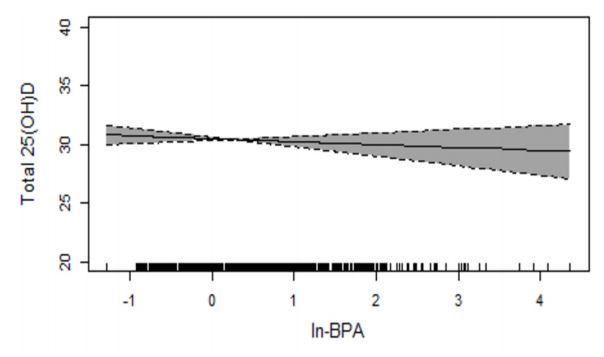
Urinary BPA and Phthalate Metabolite Concentrations and Plasma Vitamin D Levels in Pregnant Women: A Repeated Measures Analysis
Lauren E. Johns,1 Kelly K. Ferguson,1’2 David E. Cantonwine,3 Thomas F. McElrath,3 Bhramar Mukherjee,4 and John D. Meeker1
1 department of Environmental Health Sciences, University of Michigan School of Public Health, Ann Arbor, Michigan, USA
2 Epidemiology Branch, National Institute of Environmental Health Sciences, National Institutes of Health, Department of Health and Human Services, Research Triangle Park, North Carolina, USA
3 Division of Maternal-Fetal Medicine, Brigham and Women’s Hospital, Harvard Medical School, Boston, Massachusetts, USA department of Biostatistics, University of Michigan School of Public Health, Ann Arbor, Michigan, USA
Background: In addition to its well-established role in maintaining skeletal health, vitamin D has essential regulatory functions in female reproductive and pregnancy outcomes. Phthalates and bisphenol A (BPA) are endocrine disruptors, and previous research has suggested that these chemical agents may disrupt circulating levels of total 25(OH)D in adults.
Objectives: We investigated the relationships between repeated measures of urinary phthalate metabolites and BPA and circulating total 25(OH)D in a prospective cohort of pregnant women.
Methods: The present study population includes participants (n = 477) in a nested case-control study of preterm birth drawn from a prospective birth cohort of pregnant women at Brigham and Women’s Hospital in Boston, Massachusetts. Urine and blood samples were collected for biomarker measurements at median 10 wk and 26 wk of gestation.
Results: In repeated measures analysis, we observed that an interquartile range (IQR) increase in urinary mono-3-carboxypropyl phthalate (MCPP) was associated with a 4.48% decrease [95% confidence interval (CI): -7.37, -1.58] in total 25(OH)D. We also detected inverse associations for metabolites of di(2-ethylhexyl) phthalate (DEHP) [percent difference (%A) = — 2.83 to -2.16].
For BPA, we observed a nonsignificant inverse association with total 25(OH)D in the overall population. Our sensitivity analysis revealed that the associations for some metabolites (e.g., MEHP) varied by race/ethnicity, which may reflect potential differences in susceptibility.
In agreement with findings from repeated measures analysis, we reported that DEHP metabolites and BPA were significantly associated with an approximate 20% increase in the odds of vitamin D deficiency (<20ng/mL) [odds ratio (95% CI): 1.19 (1.06, 1.35) for molar sum of DEHP metabolites and 1.22 (1.01, 1.47) for BPA] at median 10 wk and 26 wk, respectively.
Conclusions: Our results provide suggestive evidence of the potential for environmental exposure to phthalates and/or BPA to disrupt circulating vitamin D levels in pregnancy. https://doi.org/10.1289/EHP1178
📄 Download the PDF from VitaminDWiki
Increase of BPA by one quartile in women decreased Vitamin D by 3.7% – Nov 2016
Relationships Between Urinary Phthalate Metabolite and Bisphenol A Concentrations and Vitamin D Levels in U.S. Adults: National Health and Nutrition Examination Survey (NHANES), 2005-2010.
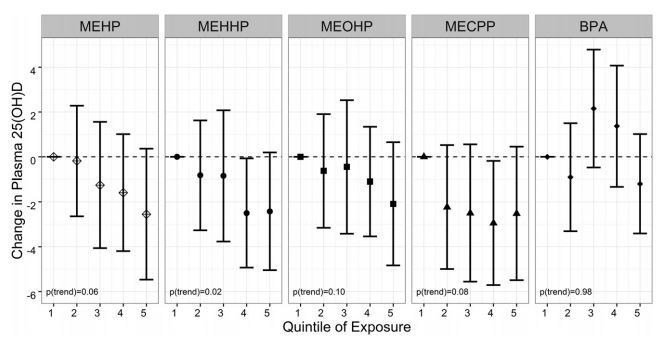
J Clin Endocrinol Metab. 2016 Nov;101(11):4062-4069 DOI: 10.1210/jc.2016-2134
Johns LE1, Ferguson KK1, Meeker JD1.
- 1 Department of Environmental Health Sciences (L.E.J., K.K.F., J.D.M.), University of Michigan School of Public Health, Ann Arbor, Michigan 48109; and Epidemiology Branch (K.K.F.), National Institute of Environmental Health Sciences, Research Triangle Park, North Carolina 27709.
CONTEXT: Recent research suggests that environmental exposure to endocrine-disrupting chemicals may alter circulating 25-hydroxyvitamin D [25(OH)D] levels in humans. To date, no studies have assessed the associations between phthalates and bisphenol A (BPA) and total 25(OH)D in the U.S. general population.
OBJECTIVE: To explore relationships between urinary concentrations of 11 phthalate metabolites and BPA and serum total 25(OH)D in a representative sample of U.S. adults.
DESIGN: A cross-sectional study.
SETTING: U.S. National Health and Nutrition Examination Survey, 2005-2010.
PATIENTS OR OTHER PARTICIPANTS: U.S. general adult population (aged ≥20 years).
INTERVENTIONS: None Main Outcome Measures: Serum total 25(OH)D measured by liquid chromatography-tandem mass spectrometry.
RESULTS:
Metabolites of di(2-ethylhexyl) phthalate (DEHP) were consistently inversely associated with total 25(OH)D in the overall study population and in gender-stratified models. In the overall population, we detected a significant inverse relationship for the molar sum of DEHP metabolites (ΣDEHP), where an interquartile range increase in ΣDEHP was associated with a 1.90% decrease (95% confidence interval [CI], -3.64, -0.17) in total 25(OH)D. A positive association was detected for monoethyl phthalate.
For BPA, we found a statistically significant inverse relationship in women, but not in men. In women, an interquartile range increase in urinary BPA was associated with a 3.71% decrease (95% CI, -6.41, -1.02) in total 25(OH)D.
CONCLUSIONS:
Overall, our results provide suggestive evidence that environmental exposure to phthalates and BPA may alter circulating levels of total 25(OH)D in adults. Future human and animal studies are required to resolve the direction, temporality, and impact of these relationships.
📄 Download the PDF from VitaminDWiki
92% of Europeans have excessive BPA in their urine - Sept 2023
Maxiumum Total Daily Intake (TDI) is now 0.0002 micrograms per kg of body weight in Europe
Had been 4 micrograms per kg of body weight (20,000X more)
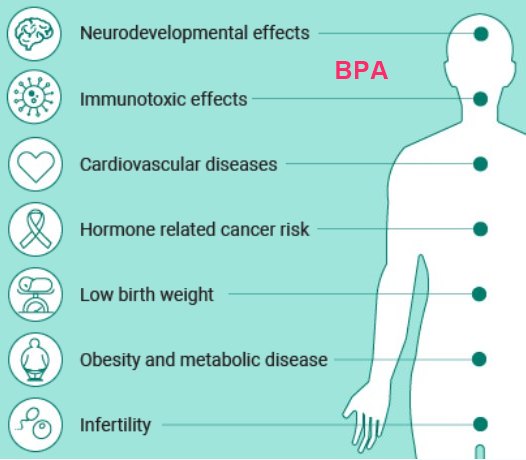
📄 Download the PDF from VitaminDWiki

